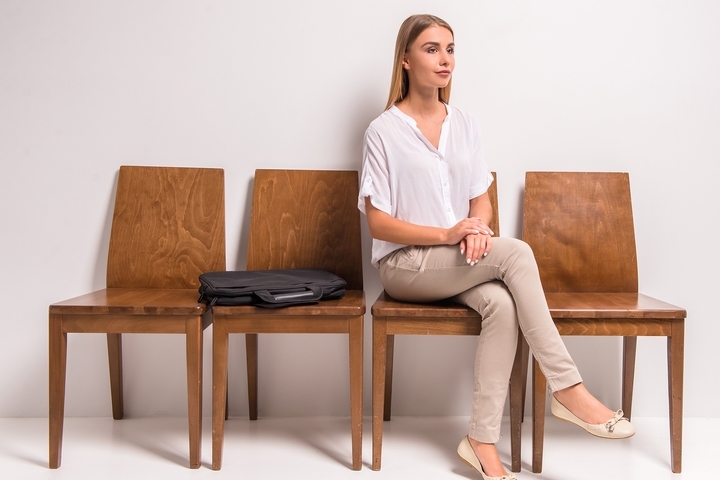4 Different Types of Bad Posture
There are many signs of bad posture that we don’t even realize are exactly that. Rounded shoulders. A potbelly. Bent knees when standing or walking. A head that leads forward or backward. Back pain. Body aches and pains. Muscle fatigue. Headaches and migraines. Bad posture can cause all these things.
It is important to correct or address the underlying cause of bad posture before doing anything else. Those must be adjusted if you have bad habits when standing, sitting, or lying down. This may involve buying a new chair or office desk, purchasing a new mattress, and modifying how you work at a computer or look at your smartphone.
It may also involve doing physical therapy or wearing a brace, depending on the underlying condition and what’s happening symptomatically from the poor posture. Though it can take practice and be mindful, it is possible to correct bad posture and take away those aches and pains in the body.
If you aren’t sure whether your posture is healthy, you can consult a chiropractor or try to identify the issues for yourself. Let’s learn about the four different types of bad posture:
Type #1: Kyphosis

Kyphosis is a forward rounding of the upper back. Unlike the natural curve in your upper back, typically somewhere between 20-50 degrees, kyphosis is when there are more than 50 degrees of excessive curvature. It’s akin to a slight hunchback and makes it appear as if the person is slouching.
Kyphosis is most common in older women but can be seen at any age and gender. This type of bad posture happens as bones in the spine weaken from osteoporosis and start to crack or compress. You may also see kyphosis develop from spinal disc degeneration, diseases such as polio, as a by-product of chemotherapy or radiation in treating cancer, or from an infection.
Type #2: Flat Back

A flat back takes the spine’s natural ‘S’ curve and flattens it. Flatback syndrome means an imbalance in the spine, and the person leans forward in response. If you have trouble standing up straight or are experiencing back and leg pain, it could relate to a flat back.
Possible causes of flat back relate to changes in the spine originating from degenerative disc disease, compression fractures, and ankylosing spondylitis. As with other types of bad posture, it takes time to resolve the posture issue and may require physical therapy or braces to re-establish alignment.
Type #3: Swayback

Swayback is when the natural curve in the spine is exaggerated by posture. When swayback occurs, you will notice the spine curving inward at the lower back and neck, typically resulting in back pain, discomfort, and difficulty moving. When you suffer from swayback, you often see the stomach, the buttocks, the head tilting forward, and the shoulders sitting further back.
This type of bad posture puts undue stress on the lower back causing it to work harder. Swayback is caused by several things and often relates to osteoporosis, kyphosis, obesity, pregnancy, high heels, and stomach sleeping.
Type #4: Forward Head

Forward head posture is very common today. The head extends out past the shoulders. This is caused by repeated actions such as being constantly hunched over their smartphone or at a computer all day. Some people may better refer to the forward head as ‘tech neck.
This bad posture type leads to tension and stiffness in the neck, shoulders, back, and even pain. Once the head goes forward, the shoulders and neck tend to follow. The head is 10-12 pounds, sometimes more, and causes the body to lean when it’s jotted forward. The result is a hunch from the stress on the neck, shoulders, back, and spine.
Why Bad Posture Is Bad for Health

Bad posture is very common. A person may exhibit bad posture for many reasons. It may make them feel comfortable in some way, compensate for discomfort or an injury, or adapt to the seating or environment that one is in. Regardless of why, bad posture is a problem that leads to muscle and joint strain, wears on the body.
Bad posture also leads to pain in the neck, head, and back, and increases the risk of injury during exercise, work, and other activities. In correcting bad posture, one has to align the spine where the muscle groups, joints, and ligaments are aligned in a minimally-stressful way.
What Does Good Posture Look Like?

A good healthy posture keeps your body aligned. When standing, the ears should be lined up with the shoulders, the shoulders lined over the hips, and the hips over the ankles. When sitting, ideally, this looks like two flat feet on the ground, upright shoulders, and even weight distribution across the hips.
By practicing good posture and proper spine alignment, you avoid putting unnecessary stress on other parts of the body and causing the sorts of aches and pains that could lead to serious pain health consequences.

